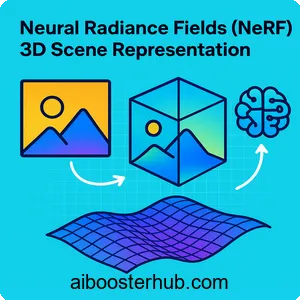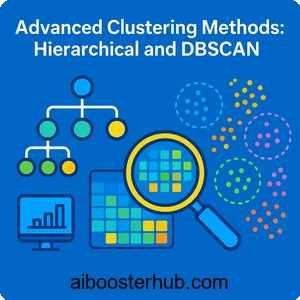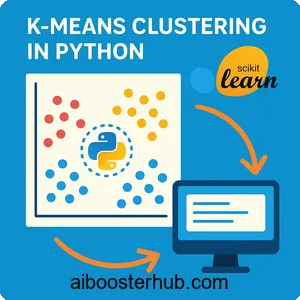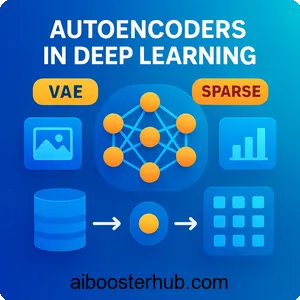Gradient Boosting Machine Learning: Complete Guide
Gradient boosting stands as one of the most powerful and versatile machine learning algorithms, dominating competitive data science and powering countless real-world applications. From predicting customer churn to detecting fraud, gradient boosting machines have proven their worth across industries. This comprehensive guide will walk you through everything you need to know about gradient boosting, from fundamental concepts to practical implementation.
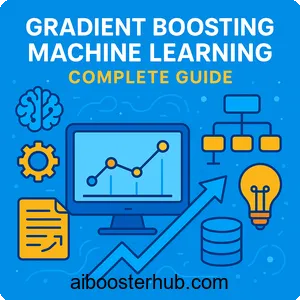
Content
Toggle1. What is gradient boosting?
Gradient boosting is an ensemble learning technique that builds a strong predictive model by sequentially combining multiple weak learners, typically decision trees. Unlike random forests that build trees independently, gradient boosting creates trees one at a time, where each new tree corrects the errors made by the previously trained sequence of trees.
The core principle behind boosting is deceptively simple: instead of trying to build one perfect model, we combine many simple models in a way that each subsequent model focuses on the mistakes of its predecessors. Think of it like a team of specialists where each expert focuses on solving the problems that previous experts couldn’t handle well.
A gradient boosting machine works by iteratively fitting new models to the residual errors of the combined ensemble. In mathematical terms, if we have a loss function \( L(y, F(x)) \) where \( y \) is the true value and \( F(x) \) is our prediction, gradient boosting minimizes this loss by moving in the direction of the negative gradient—hence the name “gradient” boosting.
The algorithm starts with an initial prediction, often just the mean of the target variable. Then, it repeatedly:
- Calculates the residuals (errors) of the current model
- Fits a new weak learner to these residuals
- Adds this weak learner to the ensemble with a weight determined by a learning rate
- Updates predictions and repeats
This sequential nature makes gradient boosting particularly effective at capturing complex patterns in data, though it also means the algorithm cannot be easily parallelized like random forests.
The mathematics behind gradient boosting
At its core, gradient boosting performs gradient descent in function space. The algorithm aims to find a function \( F(x) \) that minimizes the expected value of a loss function:
$$ F^* = \arg\min_F \mathbb{E}_{x,y}[L(y, F(x))] $$
The algorithm builds this function additively:
$$ F_m(x) = F_{m-1}(x) + \nu \cdot h_m(x) $$
where \( F_m(x) \) is the model at iteration \( m \), \( h_m(x) \) is the new weak learner, and \( \nu \) is the learning rate (also called shrinkage parameter). Each weak learner \( h_m(x) \) is trained to predict the negative gradient of the loss function:
$$ h_m(x) \approx -\frac{\partial L(y, F_{m-1}(x))}{\partial F_{m-1}(x)} $$
For squared error loss, this negative gradient simplifies to the residuals \( y – F_{m-1}(x) \), making the algorithm intuitive: each tree predicts what the previous ensemble got wrong.
2. Understanding the boosting algorithm
Boosting as a concept predates gradient boosting and represents a fundamental approach in ensemble learning. The term “boosting” refers to the idea of “boosting” a weak learning algorithm into a strong one. A weak learner is a model that performs only slightly better than random guessing, while a strong learner achieves high accuracy.
The earliest boosting algorithm, AdaBoost (Adaptive Boosting), introduced the concept of weighting training examples based on prediction difficulty. Examples that were misclassified received higher weights, forcing subsequent models to focus on these challenging cases. While AdaBoost remains popular for classification, gradient boosting generalized this concept to work with any differentiable loss function.
Key differences: boosting vs. bagging
Understanding ensemble learning requires distinguishing between its two main approaches:
Boosting (sequential ensemble):
- Builds models sequentially
- Each model depends on previous models
- Focuses on reducing bias
- More prone to overfitting if not regularized
- Cannot be parallelized easily
- Examples: gradient boosting, AdaBoost, XGBoost
Bagging (parallel ensemble):
- Builds models independently and in parallel
- Each model is independent
- Focuses on reducing variance
- Less prone to overfitting
- Easily parallelizable
- Examples: random forests, bagged decision trees
Gradient boosting typically achieves higher accuracy than bagging methods on tabular data, which explains its dominance in machine learning competitions. However, this comes at the cost of longer training times and the need for careful hyperparameter tuning.
Additive models framework
Gradient boosting belongs to the family of additive models, where predictions are formed by summing multiple simple functions. The general form is:
$$ F(x) = \sum_{m=1}^{M} \beta_m b(x; \gamma_m) $$
where \( M \) is the number of base learners, \( \beta_m \) are weights, and \( b(x; \gamma_m) \) are basis functions (in our case, decision trees) with parameters \( \gamma_m \).
This framework provides flexibility. Different loss functions lead to different gradient boosting variants:
- Squared loss leads to GBRT (Gradient Boosted Regression Trees) or gradient boosting regressor
- Log-loss leads to GradientBoostingClassifier
- Absolute loss provides robustness to outliers
- Huber loss combines benefits of squared and absolute losses
3. Types of gradient boosting implementations
The gradient boosting concept has spawned numerous implementations, each with unique optimizations and features. Understanding these variants helps you choose the right tool for your specific use case.
Traditional GBM and GBDT
The classic gradient boosting machine (GBM) or GBDT (Gradient Boosted Decision Trees) implementation follows the algorithm as originally conceived. Libraries like scikit-learn provide straightforward implementations:
from sklearn.ensemble import GradientBoostingClassifier, GradientBoostingRegressor
# For classification tasks
clf = GradientBoostingClassifier(
n_estimators=100,
learning_rate=0.1,
max_depth=3,
random_state=42
)
# For regression tasks
reg = GradientBoostingRegressor(
n_estimators=100,
learning_rate=0.1,
max_depth=3,
random_state=42
)
While these implementations work well for small to medium datasets, they can be slow on large datasets and don’t include all the modern optimizations.
XGBoost: extreme gradient boosting
XGBoost revolutionized gradient boosting by introducing algorithmic and system-level optimizations:
- Parallel tree construction
- Cache-aware access patterns
- Out-of-core computing for data that doesn’t fit in memory
- Regularization terms in the objective function
- Handling of missing values
import xgboost as xgb
# Create DMatrix for efficient data handling
dtrain = xgb.DMatrix(X_train, label=y_train)
# Set parameters
params = {
'objective': 'binary:logistic',
'max_depth': 3,
'learning_rate': 0.1,
'n_estimators': 100
}
# Train model
model = xgb.train(params, dtrain)
The implementation adds a regularization term to the loss function:
$$\text{Obj} = \sum_{i=1}^{n} L(y_i, \hat{y}_i) + \sum_{k=1}^{K} \Omega(f_k)$$
where \( \Omega(f_k) = \gamma T + \frac{1}{2}\lambda \sum_{j=1}^{T} w_j^2 \) penalizes model complexity through the number of leaves \( T \) and leaf weights \( w_j \).
LightGBM: light gradient boosting machine
LightGBM, developed by Microsoft, introduces two key innovations:
Gradient-based One-Side Sampling (GOSS): Keeps all instances with large gradients but randomly samples instances with small gradients, reducing computation while maintaining accuracy.
Exclusive Feature Bundling (EFB): Bundles mutually exclusive features (features that rarely take non-zero values simultaneously) to reduce feature dimensionality.
import lightgbm as lgb
# Create dataset
train_data = lgb.Dataset(X_train, label=y_train)
# Set parameters
params = {
'objective': 'binary',
'metric': 'binary_logloss',
'boosting_type': 'gbdt',
'num_leaves': 31,
'learning_rate': 0.05
}
# Train
gbm_model = lgb.train(params, train_data, num_boost_round=100)
LightGBM typically trains faster than XGBoost, especially on large datasets, and often achieves comparable or better accuracy.
CatBoost: categorical boosting
This implementation from Yandex specializes in handling categorical features without extensive preprocessing:
from catboost import CatBoostClassifier
# Define categorical features
cat_features = [0, 1, 3] # indices of categorical columns
# Train model
model = CatBoostClassifier(
iterations=100,
learning_rate=0.1,
depth=6,
cat_features=cat_features,
verbose=False
)
model.fit(X_train, y_train)
CatBoost uses ordered boosting and ordered target statistics to reduce overfitting and handle categorical features effectively without one-hot encoding.
4. Building a gradient boosting model: practical implementation
Let’s walk through a complete example of building a GBM model for a real-world classification problem. We’ll use a dataset to predict whether a customer will churn, demonstrating best practices along the way.
Data preparation and exploration
import pandas as pd
import numpy as np
from sklearn.model_selection import train_test_split
from sklearn.preprocessing import StandardScaler
from sklearn.ensemble import GradientBoostingClassifier
from sklearn.metrics import accuracy_score, roc_auc_score, classification_report
import matplotlib.pyplot as plt
# Generate synthetic customer churn data
np.random.seed(42)
n_samples = 10000
data = {
'tenure_months': np.random.randint(1, 72, n_samples),
'monthly_charges': np.random.uniform(20, 120, n_samples),
'total_charges': np.random.uniform(100, 8000, n_samples),
'contract_type': np.random.choice([0, 1, 2], n_samples), # 0: month-to-month, 1: one year, 2: two year
'payment_method': np.random.choice([0, 1, 2, 3], n_samples),
'tech_support': np.random.choice([0, 1], n_samples),
'online_security': np.random.choice([0, 1], n_samples)
}
df = pd.DataFrame(data)
# Create target variable with logical relationships
churn_prob = (
0.3 * (df['contract_type'] == 0) + # month-to-month more likely to churn
0.2 * (df['tenure_months'] < 12) + # new customers more likely to churn
0.15 * (df['tech_support'] == 0) + # no support increases churn
0.1 * (df['monthly_charges'] > 80) +
np.random.uniform(0, 0.25, n_samples)
)
df['churn'] = (churn_prob > 0.5).astype(int)
# Split features and target
X = df.drop('churn', axis=1)
y = df['churn']
# Train-test split
X_train, X_test, y_train, y_test = train_test_split(
X, y, test_size=0.2, random_state=42, stratify=y
)
print(f"Training set size: {X_train.shape}")
print(f"Test set size: {X_test.shape}")
print(f"Churn rate in training: {y_train.mean():.2%}")
Training a gradient boosting classifier
# Initialize GradientBoostingClassifier
gb_clf = GradientBoostingClassifier(
n_estimators=100,
learning_rate=0.1,
max_depth=3,
min_samples_split=20,
min_samples_leaf=10,
subsample=0.8,
random_state=42,
verbose=1
)
# Train the model
gb_clf.fit(X_train, y_train)
# Make predictions
y_pred = gb_clf.predict(X_test)
y_pred_proba = gb_clf.predict_proba(X_test)[:, 1]
# Evaluate performance
accuracy = accuracy_score(y_test, y_pred)
roc_auc = roc_auc_score(y_test, y_pred_proba)
print(f"\nModel Performance:")
print(f"Accuracy: {accuracy:.4f}")
print(f"ROC AUC: {roc_auc:.4f}")
print("\nClassification Report:")
print(classification_report(y_test, y_pred))
Feature importance analysis
One of gradient boosting’s strengths is providing feature importance scores:
# Get feature importance
feature_importance = pd.DataFrame({
'feature': X.columns,
'importance': gb_clf.feature_importances_
}).sort_values('importance', ascending=False)
print("\nFeature Importance:")
print(feature_importance)
# Visualize feature importance
plt.figure(figsize=(10, 6))
plt.barh(feature_importance['feature'], feature_importance['importance'])
plt.xlabel('Importance')
plt.title('Feature Importance in Gradient Boosting Model')
plt.tight_layout()
plt.show()
Training a gradient boosting regressor
For regression tasks, the gradient boosting regressor works similarly:
from sklearn.ensemble import GradientBoostingRegressor
from sklearn.metrics import mean_squared_error, r2_score
# Generate regression data
np.random.seed(42)
X_reg = np.random.rand(1000, 5)
y_reg = 3*X_reg[:, 0] + 2*X_reg[:, 1] - X_reg[:, 2] + np.random.normal(0, 0.1, 1000)
X_train_reg, X_test_reg, y_train_reg, y_test_reg = train_test_split(
X_reg, y_reg, test_size=0.2, random_state=42
)
# Train GBT regressor
gb_reg = GradientBoostingRegressor(
n_estimators=100,
learning_rate=0.1,
max_depth=3,
random_state=42
)
gb_reg.fit(X_train_reg, y_train_reg)
# Predictions and evaluation
y_pred_reg = gb_reg.predict(X_test_reg)
mse = mean_squared_error(y_test_reg, y_pred_reg)
r2 = r2_score(y_test_reg, y_pred_reg)
print(f"\nRegression Performance:")
print(f"MSE: {mse:.4f}")
print(f"R² Score: {r2:.4f}")
5. Hyperparameter tuning and optimization
Gradient boosting models have numerous hyperparameters that significantly impact performance. Understanding and tuning these parameters is crucial for building effective models.
Critical hyperparameters
Number of estimators \(n_estimators\): Controls how many trees to build. More trees can improve performance but increase training time and risk overfitting. Typical range: 100-1000.
Learning rate (learning_rate or eta): Shrinks the contribution of each tree. Smaller values require more trees but often lead to better performance. Common values: 0.01-0.3.
The relationship between these two parameters is crucial:
$$ F_M(x) = F_0(x) + \nu \sum_{m=1}^{M} h_m(x) $$
A smaller \( \nu \) (learning rate) with larger \( M \) (n_estimators) typically yields better results but takes longer to train.
Max depth: Controls tree complexity. Shallow trees (3-6) work well for most problems and prevent overfitting. Deeper trees can capture more complex patterns but risk overfitting.
Subsample: Fraction of samples used for fitting base learners. Values less than 1.0 lead to stochastic gradient boosting, which can improve generalization. Common range: 0.6-1.0.
Min samples split and min samples leaf: Control when to split nodes and minimum samples in leaf nodes. Higher values prevent overfitting.
Grid search and cross-validation
from sklearn.model_selection import GridSearchCV
# Define parameter grid
param_grid = {
'n_estimators': [50, 100, 200],
'learning_rate': [0.01, 0.1, 0.2],
'max_depth': [3, 5, 7],
'subsample': [0.8, 1.0]
}
# Initialize GridSearchCV
grid_search = GridSearchCV(
GradientBoostingClassifier(random_state=42),
param_grid,
cv=5,
scoring='roc_auc',
n_jobs=-1,
verbose=1
)
# Fit grid search
grid_search.fit(X_train, y_train)
print(f"Best parameters: {grid_search.best_params_}")
print(f"Best cross-validation score: {grid_search.best_score_:.4f}")
# Use best model
best_gb_model = grid_search.best_estimator_
Early stopping to prevent overfitting
Many implementations support early stopping, which monitors validation performance and stops training when improvement plateaus:
# Train with validation set for early stopping
X_train_sub, X_val, y_train_sub, y_val = train_test_split(
X_train, y_train, test_size=0.2, random_state=42
)
gb_early = GradientBoostingClassifier(
n_estimators=1000,
learning_rate=0.1,
max_depth=3,
random_state=42,
validation_fraction=0.2,
n_iter_no_change=10,
tol=0.0001
)
gb_early.fit(X_train, y_train)
print(f"Number of estimators used: {gb_early.n_estimators_}")
6. Advanced techniques and best practices
Handling imbalanced datasets
Gradient boosting can struggle with imbalanced classes. Several strategies help:
from sklearn.utils.class_weight import compute_sample_weight
# Compute sample weights
sample_weights = compute_sample_weight('balanced', y_train)
# Train with sample weights
gb_weighted = GradientBoostingClassifier(
n_estimators=100,
learning_rate=0.1,
max_depth=3,
random_state=42
)
gb_weighted.fit(X_train, y_train, sample_weight=sample_weights)
Alternatively, use XGBoost’s scale_pos_weight parameter:
import xgboost as xgb
# Calculate scale_pos_weight
scale_pos_weight = (y_train == 0).sum() / (y_train == 1).sum()
xgb_model = xgb.XGBClassifier(
n_estimators=100,
learning_rate=0.1,
max_depth=3,
scale_pos_weight=scale_pos_weight
)
xgb_model.fit(X_train, y_train)
Regularization techniques
Beyond basic hyperparameters, several regularization techniques improve generalization:
Subsampling (Stochastic Gradient Boosting): Training each tree on a random subset of data reduces overfitting and speeds up training.
Feature subsampling: Similar to random forests, selecting a random subset of features for each tree increases diversity.
Tree constraints: Limiting max_depth, min_samples_split, and min_samples_leaf prevents overly complex trees.
Shrinkage: The learning rate acts as a regularization parameter, with smaller values requiring more estimators but generally improving test performance.
Monitoring training progress
Track loss evolution to diagnose training issues:
# Access training history
train_score = gb_clf.train_score_
test_score = np.zeros((gb_clf.n_estimators,), dtype=np.float64)
for i, y_pred in enumerate(gb_clf.staged_predict(X_test)):
test_score[i] = accuracy_score(y_test, y_pred)
# Plot learning curves
plt.figure(figsize=(12, 5))
plt.subplot(1, 2, 1)
plt.plot(train_score, label='Training Score')
plt.plot(test_score, label='Test Score')
plt.xlabel('Boosting Iteration')
plt.ylabel('Accuracy')
plt.legend()
plt.title('Learning Curves')
plt.show()
Comparing gradient boosting implementations
from sklearn.ensemble import GradientBoostingClassifier
import xgboost as xgb
import lightgbm as lgb
from catboost import CatBoostClassifier
import time
models = {
'Sklearn GBM': GradientBoostingClassifier(n_estimators=100, random_state=42),
'XGBoost': xgb.XGBClassifier(n_estimators=100, random_state=42, verbosity=0),
'LightGBM': lgb.LGBMClassifier(n_estimators=100, random_state=42, verbose=-1),
'CatBoost': CatBoostClassifier(n_estimators=100, random_state=42, verbose=False)
}
results = {}
for name, model in models.items():
start_time = time.time()
model.fit(X_train, y_train)
train_time = time.time() - start_time
y_pred = model.predict(X_test)
accuracy = accuracy_score(y_test, y_pred)
results[name] = {'accuracy': accuracy, 'train_time': train_time}
print(f"{name}: Accuracy={accuracy:.4f}, Time={train_time:.2f}s")
When to use gradient boosting
Gradient boosting excels in specific scenarios:
Ideal use cases:
- Tabular/structured data with mixed feature types
- Complex non-linear relationships
- Feature importance interpretation is needed
- High predictive accuracy is prioritized
- Medium-sized datasets (thousands to millions of rows)
When to consider alternatives:
- Very large datasets where training time is critical (consider deep learning or LightGBM)
- Image, text, or sequential data (deep learning often better)
- Need for real-time predictions with strict latency requirements
- Interpretability is paramount (consider linear models or decision trees)
- Very small datasets where simpler models may generalize better
7. Conclusion
Gradient boosting represents one of the most successful algorithms in machine learning, offering exceptional performance on structured data through its sequential ensemble approach. By iteratively correcting errors and optimizing directly on the loss function, gradient boosting machines achieve accuracy that often surpasses other techniques.
Throughout this guide, we’ve explored the fundamental mathematics, various implementations like GBDT, GBT, and GBRT, and practical techniques for building robust models. Whether you’re using scikit-learn’s GradientBoostingClassifier for simplicity, XGBoost for performance, or LightGBM for speed, understanding the core principles of boosting and ensemble learning will help you effectively apply these powerful tools. With proper hyperparameter tuning, regularization, and validation strategies, gradient boosting can become an invaluable addition to your machine learning toolkit.


